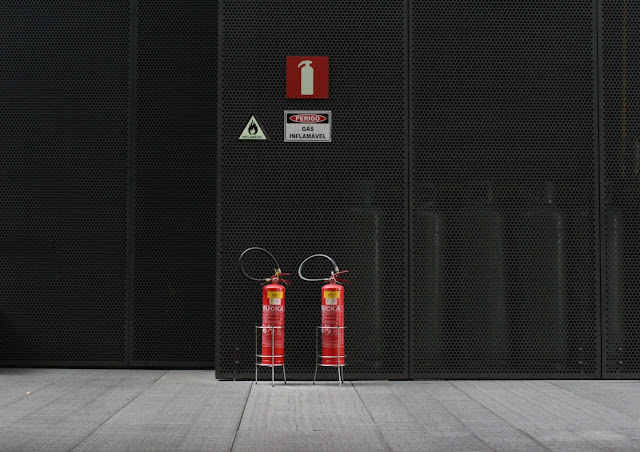When it comes to fire safety, choosing the right fire extinguisher can make all the difference in effectively suppressing a fire. Each fire class represents a specific type of fire, and different extinguishing agents are designed to combat each class effectively. Understanding these fire classes and their corresponding extinguishers is key to selecting the appropriate one for a particular hazard.
- Class A Fires: These fires involve ordinary
combustible materials such as wood, paper, or textiles. For Class A fires,
water-based fire extinguishers, labeled with a Class A symbol, are the
most suitable choice. They work by cooling and suppressing the fire.
- Class B Fires: Class B fires involve flammable
liquids like gasoline, oil, or solvents. Extinguishers labeled with a
Class B symbol, such as dry chemical or foam extinguishers, are effective
in smothering the flames and preventing reignition.
- Class C Fires: Class C fires are electrical fires,
involving energized electrical equipment or wiring. CO2 (carbon dioxide)
extinguishers are the most appropriate choice for these fires, as they
displace oxygen, depriving the fire of its fuel source without conducting
electricity.
- Class D Fires: Class D fires are fires involving
combustible metals, such as magnesium, titanium, or sodium. Specialized
Class D extinguishers, typically containing dry powder agents specifically
formulated for metal fires, are needed to combat these hazardous fires.
- Class K Fires: Class K fires involve cooking oils and
fats, commonly found in commercial kitchens. Wet chemical extinguishers,
designed to react with the oils and create a soapy foam that suppresses
the fire, are specifically designed for Class K hazards.
Choosing the right fire
extinguisher requires careful consideration of the potential fire hazards
present in a specific environment. It is essential to conduct a thorough fire
risk assessment to identify the possible fire classes that may arise and then
select the appropriate extinguishers accordingly.
To gain a deeper understanding of
the different fire classes and the fire extinguishers suitable for each, visit Hub
Site Services. This resource provides valuable information on selecting the
right fire extinguisher for confined spaces, helping ensure optimal fire safety
measures are in place.
In conclusion, selecting the
right fire extinguisher is crucial for effective fire protection. By
understanding the different fire classes and their corresponding extinguishers,
individuals can make informed decisions in equipping their environments with
the appropriate firefighting equipment. It is important to conduct regular
inspections, maintain the extinguishers in good working condition, and provide
proper training to personnel on their correct usage. Taking these measures will
contribute to a safer environment and better preparedness in the event of a
fire emergency.





0 Comments